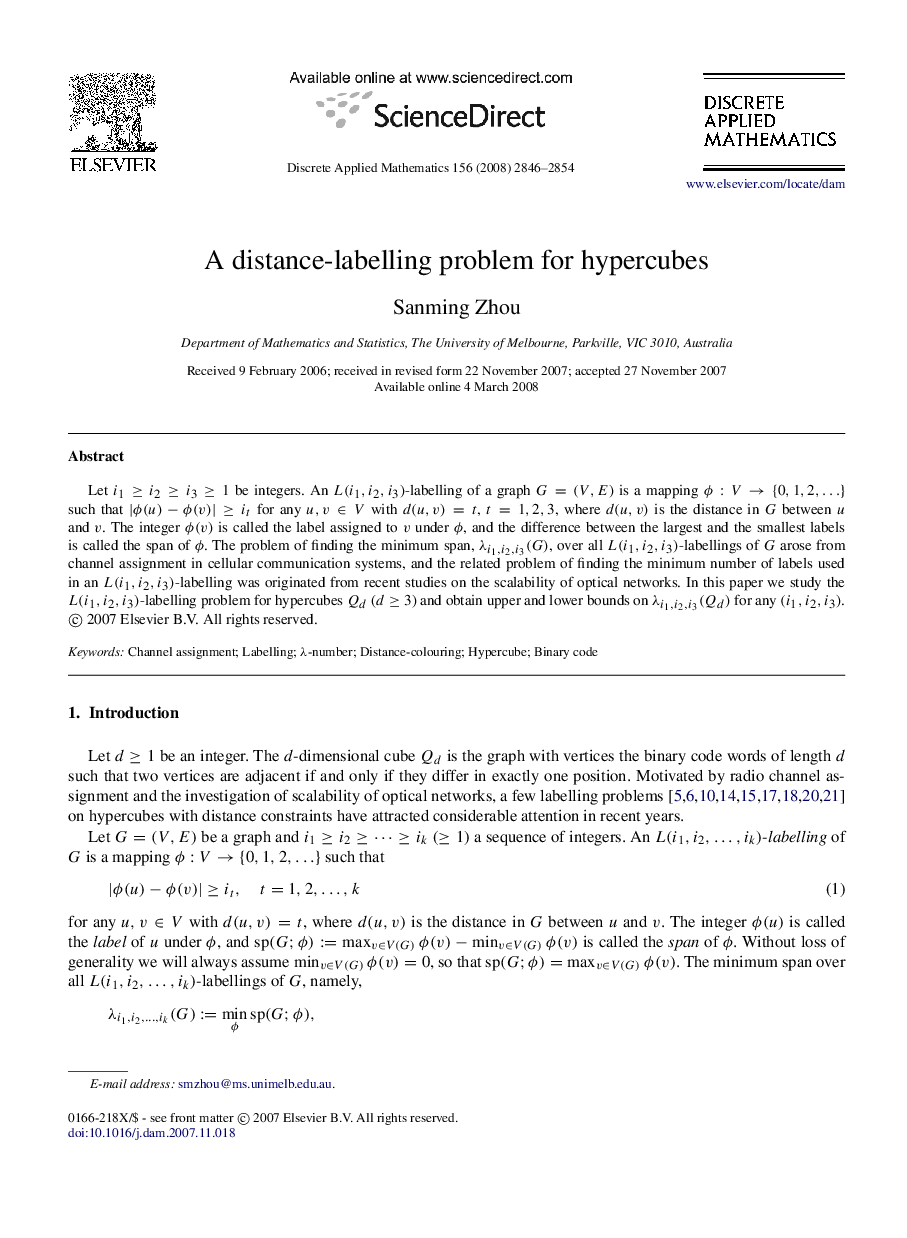| Article ID | Journal | Published Year | Pages | File Type |
|---|---|---|---|---|
| 420500 | Discrete Applied Mathematics | 2008 | 9 Pages |
Let i1≥i2≥i3≥1i1≥i2≥i3≥1 be integers. An L(i1,i2,i3)L(i1,i2,i3)-labelling of a graph G=(V,E)G=(V,E) is a mapping ϕ:V→{0,1,2,…}ϕ:V→{0,1,2,…} such that |ϕ(u)−ϕ(v)|≥it|ϕ(u)−ϕ(v)|≥it for any u,v∈Vu,v∈V with d(u,v)=td(u,v)=t, t=1,2,3t=1,2,3, where d(u,v)d(u,v) is the distance in GG between uu and vv. The integer ϕ(v)ϕ(v) is called the label assigned to vv under ϕϕ, and the difference between the largest and the smallest labels is called the span of ϕϕ. The problem of finding the minimum span, λi1,i2,i3(G)λi1,i2,i3(G), over all L(i1,i2,i3)L(i1,i2,i3)-labellings of GG arose from channel assignment in cellular communication systems, and the related problem of finding the minimum number of labels used in an L(i1,i2,i3)L(i1,i2,i3)-labelling was originated from recent studies on the scalability of optical networks. In this paper we study the L(i1,i2,i3)L(i1,i2,i3)-labelling problem for hypercubes QdQd (d≥3d≥3) and obtain upper and lower bounds on λi1,i2,i3(Qd)λi1,i2,i3(Qd) for any (i1,i2,i3)(i1,i2,i3).
